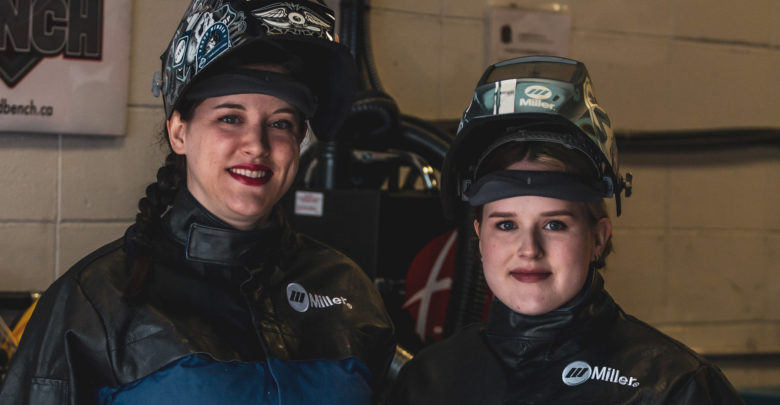U of A students start safe shop space for women and underrepresented genders
The Red Bench gives underrepresented communities in the trades an accessible and safe shop space.
 Supplied
SuppliedFor University of Alberta chemical and materials engineering students Mackenzi (Mack) Johnston and Jolene (Jo) Borrelli, knowing that women and underrepresented genders didn’t have a space for them in trades like welding was unacceptable. That’s why they started The Red Bench.
The Red Bench is a membership-based community workshop that provides women and LGBTQIA+ individuals the opportunity to learn new skills, hone their current skills, or just access tools in an accepting space. The shop space allows these members to overcome gender and other identity-based barriers as well as cost barriers.
For Johnston, the co-founder and CEO of The Red Bench, personal experience was a factor in starting the shop. She had previously been enrolled in a welding class, but didn’t end up going into the field because she questioned whether or not she belonged.
“When I personally was trying to get into welding as a trade, I was so quickly discouraged by the environment that I was a part of in the shop… that I could so badly could’ve used something like The Red Bench,” Johnston said. “I was so quickly discouraged from the trade, from the working environment, that I unfortunately decided … pretty much as soon as I started, that it wasn’t for me. But I don’t believe that it wasn’t for me.”
“I just think that it was the culture, it was the environment that wasn’t for me, and I know that this is very much a shared experience with all types of women and people who try to get into [the] trades and technology. That’s why this type of space exists.”
The Red Bench tackles gender stereotypes in the trades by giving women and underrepresented individuals the opportunity to safely learn and explore the skills they need to succeed. According to Borrelli, co-founder and president of The Red Bench, though the core goal of the workshop is to increase their members’ confidence, they hope that their work can inspire change in the industry as well.
“You won’t even believe the creativity and talent that come[s] out of people once they start doing it,” Borrelli explained. “Once you have that confidence, it just extends into other parts of your life and you become more confident and you grow as a person.”
“[In the] larger scenario, we want to reduce the gender disparity, in welding especially, but in trades and technology as a whole, so that all this crap about welding only being for one kind of person, or we don’t have enough women in trades, blah blah blah, is just a distant memory … It’s just so obvious that it’s for anybody.”
Not only does The Red Bench aim to increase the number of women in trades, but they also want to specifically highlight leadership positions.
“One thing that’s still not happening is that there’s no women and diverse people in leadership positions in the industry,” Johnston said. “It’s very, very rare … you just don’t see it … and we want to use The Red Bench as a space for those women and people who are interested in getting into leadership to try it with us.”
By giving their community members the opportunity to explore these skilled trades, Johnston and Borrelli hope that The Red Bench can be used as a “conduit” for these individuals to explore going into the industry, furthering their educations through Women Building Futures, or institutions like NAIT and the U of A.
Both Johnston and Borrelli noted that trades like metalworking require tradespeople to be creative and “crafty,” stressing the transferability of the skills many women already have.
“On the very first day, we had some time at the very end to just sit with the paper, pencils, ruler — all of that, and just design the jewelry tree [project],” Johnston highlighted. “Going into it, I was thinking that they’d all create a jewelry tree that looked a lot like the inspiration photo.”
“But they all ended up doing, and completely on their own, their own inspiration … without us doing anything, they all came up with super unique and creative designs for their trees. And all of them had some sort of reasoning for their trees … they made all of these very functional decisions for their trees … It was just amazing to me to watch the way they flourished.”
The Red Bench expects to be expanding in the future because of “overwhelming” community support and demand. Borrelli explained that along with the expansion of their shop space, they will seek mentors that represent their community.
“We want to bring in women and underrepresented genders within the community to take on leadership positions within The Red Bench, be able to help us grow, develop, and serve more people in the community, and just be a community hub.”




